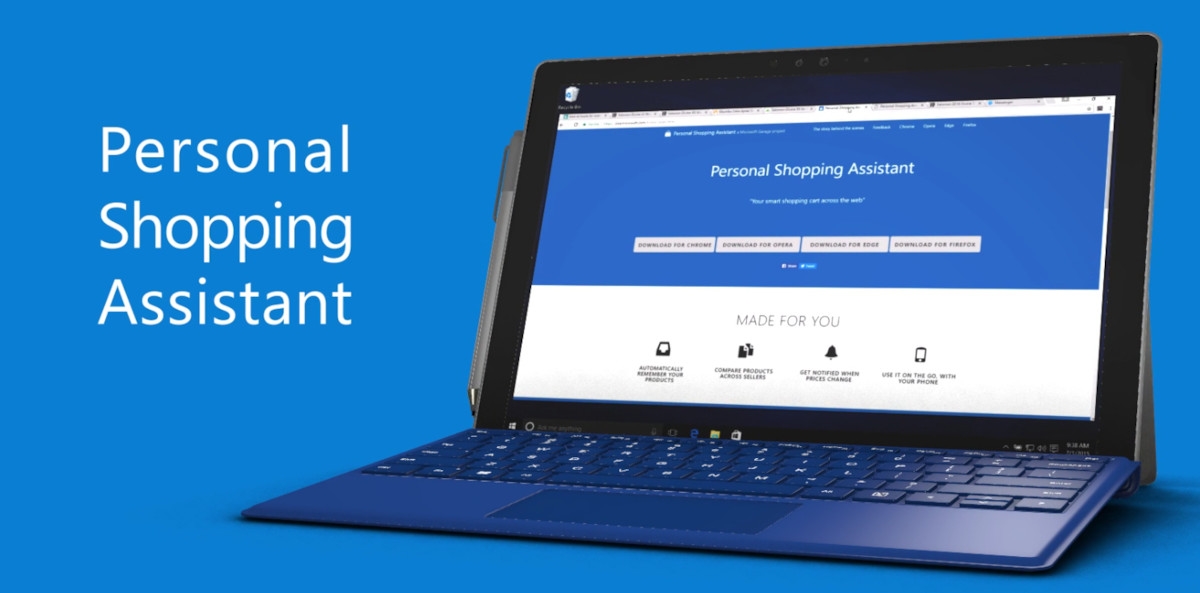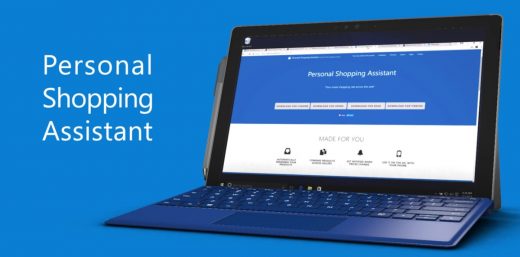Microsoft Personal Shopping Assistant To Roll Out Advertising Tool For Marketers
Microsoft Personal Shopping Assistant To Roll Out Advertising Tool For Marketers
Microsoft Personal Shopping Assistant, which launched for consumers in early 2017, will soon have a tool for marketers. The research and development team is working to build out an advertising option with help from retailers.

One major retailer has been working with Bing’s team, developing a plan to get Personal Shopping Assistant up and running as a marketing tool. Marketers and IT have teamed up at the retailer to determine how it would work with promotions and in the interface, with the goal “to get our IT team and [Bing] engineers all on the same page,” a representative at the retailer said at the MediaPost Search Insider Summit on Thursday.
Personal Shopping Assistant was originally introduced as a Chrome browser extension. Since then the tool has expanded into a web browser tool for Edge and Safari and others. It tracks how consumers shop, remembers the product browsed and saves prices, ratings and reviews for more than 100,000 consumers who use the tool. It works on more than 4,000 shopping sites globally — on mobile devices and PCs — and allows consumers to compare information across sellers, while tracking products for price and other information.
Cady Condyles, senior product marketing manager at Microsoft, said the company is looking for other retailers that want to explore advertising and marketing options through the platform. She also shared statistics, new data and updates for some of Bing’s products. For instance, Bing owns 34% of PC market share. Last month the engine served more than 1 billion queries. Sixteen percent of monthly queries are new.
More than half of those who use Bing are 45 years or older, and nearly half have an annual household income of more than $100,000. Of the 63 million PC searches that marketers cannot reach on Google, about 51 million unique retail PC searchers, 35 million business and finance, and 24 million are for travel, among others. One in three searches are done on a PC, and one in five searches are conducted across all devices.
Per vertical, Bing claims more than a 40% market share for PC clicks in health, real estate, and business or finance. While mobile remains a hot topic, 77% of retail e-commerce still occurs on PCs, which have a 52% higher conversion rate.
Search continues to move into audience segments, and much of that is attributable to artificial intelligence, which has been the backbone of Microsoft’s search platform from the beginning, according to Condyles. Bing is the largest Microsoft platform that runs on AI — including Windows, Azure, and Office — and it has come to rely more on user intent signals that sit in product, market, and custom audience segments.
Product Audiences, a pilot that Microsoft will launch later this year, allows retailers to target specific SKU product numbers that a consumer has viewed. It pulls from the retailer’s product feed when the consumer leaves the website without making a purchase, and prompts them to come back to the website to make the purchase.
Market Audience — a pilot that launched about a year ago — targets consumers in the market for a specific product or service across 20 verticals. Several tests being done include furniture retailers targeting people who plan to move, and resort wear for people getting ready to travel. Microsoft estimates that it will see click-through rates improve by 28% and conversion rates improve by 48% across auto, financial services, retail, and travel in the U.S.
Custom Audience, which works well with remarketing campaigns, requires marketers to work through a data management platform, such as Adobe Audience Manger, Oracle Blue Kai, and LiveRamp.
(28)


